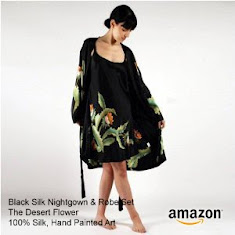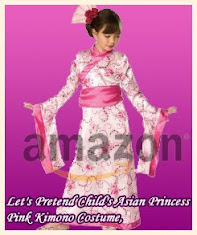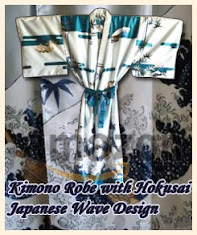Chibi Maruko-chan
From Wikipedia,
Manga
Author Momoko Sakura
Publisher Shueisha
Demographic Shōjo
Magazine Ribon
Original run August 1986 – April 2009
Volumes 16
TV anime Director Yumiko Suda, Tsutomu Shibayama
Studio Nippon Animation, Network Fuji Television, Animax
Original run January 7, 1990 – September 27, 1992
Episodes 142
Anime film
Chibi Maruko-chan: My Favorite Song
Released December 19, 1992
Runtime 93 minutes
TV anime Chibi Maruko-chan TV 2
Studio Nippon Animation, Network Fuji TV, Animax
Original run January 8, 1995 – ongoing
Episodes 757 (List of episodes)
TV drama
Chibi Maruko-chan (live-action special)
Network Fuji TV
Original run April 18, 2006, April 19, 2007 – ongoing
Episodes 3
TV drama Marumaru Maruko-chan, Network Fuji TV
Original run April 19, 2007 – February 28, 2008
Episodes 3
Anime and Manga Portal

Chibi Maruko-chan (ちびまる子ちゃん?) is a shōjo manga series by Momoko Sakura, later adapted into an anime TV series by Nippon Animation, which originally aired on Fuji Television from January 7, 1990 to September 27, 1992. The series depicts the simple, everyday life of a little girl nicknamed Maruko and her family in suburban mid-seventies Japan. The series is set in the former city of Shimizu, now part of Shizuoka City, birthplace of its author.
The first story under the title "Chibi Maruko-chan" was published in the August 1986 edition of the shōjo manga magazine Ribon. Other semi-autobiographical stories by the author had appeared in Ribon and Ribon Original in 1984 and 1985, and were included in the first "Chibi Maruko-chan" tankōbon in 1987. The author first began writing and submitting strips in her final year of senior high school, although Shueisha (the publisher of Ribon and Ribon Original) did not decide to run them until over a year later. The author's intent was to write "essays in manga form". Many stories are inspired by incidents from the author's own life, and some characters are based on her family and friends. The nostalgic, honest and thoughtful tone of the strip led to its becoming popular among a wider audience.
The Chibi Maruko-chan series has spawned numerous games, animated films and merchandising, as well as a second TV series running from 1995 to the present. Maruko's style and themes are sometimes compared to the classic comic Sazae-san. In 1989, the manga tied to receive the Kodansha Manga Award for shōjo. As of 2006, the collected volumes of the manga had sold more than 31 million copies in Japan, making it the fifth best-selling shōjo manga ever.
Contents
The trademark face fault of this series, the manga and anime and drama all, in reaction to an awkward "don't know what to say" situation (or sometimes, embarrassment) is the sudden appearance of vertical lines (黒い線, kuroi sen?) on a character's face, sometimes with an unexplained gust of wind blowing above that character's head.
Characters
Sakura family
Back row, from left: Hiroshi, Sumire, and Tomozo; middle row, from left: Sakiko and Kotake; and front row: Momoko (a.k.a. Maruko)
Momoko "Maruko" Sakura (さくらももこ, Sakura Momoko?)
Voiced by: Tarako
The title character, Maruko (born May 8, 1965) is a nine-year-old third-grade student raised in a relatively poor family of six. She is lazy, disorganized and usually late for school, in strong contrast with her neat, calm and tidy older sister (sixth-grader) who must share her room with her. Maruko, like many kids, tries to avoid homework and chores, and she takes advantage of her doting grandfather and squabbles with her sister. Nevertheless, she is a well-meaning child who tries to do good. She is similar to Calvin in Calvin and Hobbes in that she often uses adult-like language to express her child-like feelings. She has many food dislikes, including natto and tomatoes. She loves reading manga and is a good artist, and her stated goal is to become a manga artist when she grows up. It is implied that the show is drawn by Maruko herself. Maruko has a problem with her sister cooking and throws whirlwind tantrums. She knows a lot about her mother, father and grandmother.
Hiroshi Sakura (さくらひろし, Sakura Hiroshi?)
Voiced by: Yūsaku Yara
Maruko's father. He drinks every now and then but is a kind loving dad. His birthday is June 20, 1934, making him 40 years old during the series.
Sumire Sakura (さくらすみれ, Sakura Sumire?)
Voiced by: Teiyū Ichiryūsai
Maruko's mother. She tends to scold Maruko a lot. She is a strict mother but a very pleasant one. She's extremely focused on household finances, and shops mainly at department stores during bargain sales. Her birthdate is May 25, 1934, and her blood type is A. It is revealed in one episode that her maiden name is Kobayashi.
Sakiko Sakura (さくらさきこ, Sakura Sakiko?)
Voiced by: Yūko Mizutani
Maruko's older sister. She is clever and diligent, the exact opposite of the lazy Maruko. She and Maruko fight often but they get along fine. Her birthday is March 21, 1962, making her 12 in the series.
Tomozou Sakura (さくら友蔵, Sakura Tomozō?)
Voiced by: Kei Tomiyama (1990-1995), Takeshi Aono (1995-)
Maruko's kind but absent-minded grandfather. Naive and easily tricked, he keeps a pet turtle and loves watching TV with Maruko. When feeling distressed or nostalgic, he spontaneously retreats to a surreal inner world for a few seconds to improvise a sad yet comical haiku about his state of mind. His birthday is October 3, 1898, making him 76 in the series. The author has said that she used her own grandfather as the model for Tomozou, but that his personality is the opposite of Tomozou's.
Kotake Sakura (さくらこたけ, Sakura Kotake?)
Voiced by: Yūko Sasaki
Maruko's grandmother. She's wise and knows what's good for the human body. She was born on April 4, 1904. Her name of Kotake was never known in the series until it appeared in a 4-panel manga (Yonkoma) on July 1, 2007.
Maruko's friends
Tamae Honami (穂波たまえ, Honami Tamae?)
Voiced by: Naoko Watanabe
Maruko's best friend. She is intelligent and she does not include herself in other activities with maruko. Nicknamed Tama-chan.
Kazuhiko Hanawa (花輪和彦, Hanawa Kazuhiko?)
Voiced by: Masami Kikuchi
A really rich boy in Maruko's class who lives in a mansion his caretaker is Mr. Hediji . His mom is always away travelling and so he doesn't see her that often. He also has a butler who drives a limo and picks him up every day from school. His was born on August 7, 1965.
Sueo Maruo (丸尾末男, Maruo Sueo?)
Voiced by: Nobuo Tobita
Maruo is one of Maruko’s classmates and serves as the male class president and always wants to be admired by others. He has very thick glasses because he is a very serious student and studies very hard every day; black lines appear on his face nearly all of the time, especially when he seems euphoric. He is paranoid that his classmates are seeking to replace him as male class president and will target classmates that stand out and do well to discourage them from running against him. His birthday is December 31, thus giving rise to his name.
Noritaka Hamazaki (浜崎憲孝(はまじ), Hamazaki Noritaka (Hamaji)?)
Voiced by: Ai Orikasa→Tsutomu Kashiwakura
Hamaji is the most mischievous student in Maruko’s class. Despite this he is the class representative.
Tarō "Butaro" Tomita (富田太郎(ブー太郎), Tomita Tarō (Butaro)?)
Voiced by: Kazuyo Aoki (movie) Mami Matsui→Naomi Nagasawa
A boy in Maruko's class with a piglike face and ends his sentences with "buu" he is close friend of Hamaji as he always shown with him , a Japanese onomatopoeia for a pig snorting.
Hanako Migiwa (みぎわ花子, Migiwa Hanako?)
Voiced by: Miki Narahashi
She is crazy about Hanawa and does not like other girls being around with him and because Hanawa has a crush on Maruko, she is hard on Maruko. She is studying in standard 3 for the last five years because she is not good in her studies and fails every year. She is the female class president and like Maruo is pretty intent on maintaining her position, even promising along with Maruo to come in the morning to do cleaning and other work so their classmates don't have to.
Shinji Sekiguchi (関口しんじ, Sekiguchi Shinji?)
He seems kind of mean but actually he isn't. He even helped Maruko when she is learning how to bike.
Voiced by: Kyōsei Tsukui
Kimio Nagasawa (永沢君男, Nagasawa Kimio?)
His house was burned down during an accident and made his family poor in the episodes they always show a connection with fire of Nagasama. Therefore he always felt that nobody cares about him, and that everybody is out to laugh about him. He is thus became very aloof and does not talk much to other people except Fujiki, his best friend.
Voiced by: Chafūrin
Shigeru Fujiki (藤木茂, Fujiki Shigeru?)
He is very soft-spoken and is the best friend of Nagasawa he live alone in his home cause his parents go their offices early in the morning and comes late night.
Voiced by: Tomoko Naka
Shouta Yamada (山田笑太, Yamada Shouta?)
He laughs about anything good or bad, non-stop. He is also known as the "classroom idiot boy" (クラスのバカ男子)
Voiced by: Keiko Yamamoto
Kenichi Ono (大野けんいち, Ono Kenichi?)
Voiced by: Kappei Yamaguchi→Yūsuke Numata
He is Sugiyama Satoshi's best friend. Both of them love soccer.
Satoshi Sugiyama (杉山さとし, Sugiyama Satoshi?)
Voiced by: Ako Mayama
Kenichi's best friend. They are quite rude but very serious when they work. They form a good team and help each other.
Toshiko Tsuchihashi (土橋とし子, Tsuchihashi Toshiko?)
Toshiko is a very obedient and well-mannered girl. She always cares about others and also one of Maruko's and Tama's good friends.
Voiced by: Taeko Kawata
Misuzu Fuyuta (冬田美鈴, Fuyuta Misuzu?)
She has a crush on Ono Kenichi. She is a bit odd and likes to give cards to people depicting strange faces.
Voiced by: Sumie Baba
Yumiko Itō (伊藤由美子, Itō Yumiko?)
Voiced by: Masako Miura
This character only appeared in the first series and was in a trio with Maruko and Tamae.
Masaru Orihara (折原まさる, Orihara Masaru?)
A transfer student from Aichi. He appears Indian, initially resulting in rejection from his classmates.
Voiced by: Kappei Yamaguchi→Atsushi Kisaichi
Ebisu (えびす, Ebisu?)
Voiced by: Tsutomu Kashiwakura→Ai Orikasa
A likeable boy who was nominated by Sekiguchi to be male class president, but conceded the race when Maruo promised to come in and clean every morning so the class didn't have to.
Tsuyoshi Yamane (山根強, Yamane Tsuyoshi?)
He is a fan a Michiru Jo and has digestive problems.
Voiced by: Akio Suyama
Hutoshi Kosugi (小杉太, Kosugi Hutoshi?)
Voiced by: Teiyū Ichiryūsai
He's a fatty who eats a lot.
Osamu Nagayama (長山治, Nagayama Osamu?)
Voiced by: Yūko Sasaki
Hiromi Maeda (前田ひろみ, Maeda Hiromi?)
She is in charge of cleaning the classroom.
Voiced by: Megumi Urawa
Emiko Noguchi (野口笑子, Noguchi Emiko?)
Voiced by: Megumi Tano
She is very creepy and she always jokes. She also likes to make fun of others, especially Maruko. She will often spy on people.
Himeko Jyogasaki (城ヶ崎姫子, Jyogasaki Himeko?)
Sasayama's friend. She has alleged rivalry with Nagasawa.
Voiced by: Megumi Tano→Emi Motoi
Kazuko Sasayama (笹山かず子, Sasayama Kazuko?)
Fujiki's girlfriend and Himeko's friend.
Voiced by: Masako Miura
Watanabe (渡辺, Watanabe?)
Voiced by: Masami Kikuchi
Other characters
Hideyuki Togawa (戸川秀之, Togawa Hideyuki?)
Voiced by: Hirohiko Kakegawa
Maruko's homeroom teacher.
Mrs. Togawa (先生の妻?)
Voiced by: Mika Kanai
Oishi (大石, Oishi?)
Voiced by: Keiko Yamamoto
Principal (校長, Kōtyō?)
Voiced by: Ryōichi Tanaka
Hideji Saijō (西城秀治, Saijō Hideji?)
Voiced by: Chafūrin
Hanawa's butler. He is named after singer Hideki Saijo.
Shintarō Honami (穂波真太郎, Honami Shintarō?)
Voiced by: Kei Tomiyama→Nobuo Tobita
Shintarō is Tamae's father. He likes photography a lot and whenever he spots Tamae, takes a photo of her.
Mrs. Honami (たまえの母, Tamae no haha?)
Voiced by: Tomoko Naka
Tamae's mother.
Shigeo Sasaki (佐々木茂男, Sasaki Shigeo?)
Voiced by: Hirohiko Kakegawa
Sasaki is fond of trees and grows them. He is fondly called by Maruko- Sasaki Ojichan.
Mamoru Kawata (川田守, Kawata Mamoru?)
Voiced by: Kyōsei Tsukui
Midori Yoshikawa (吉川みどり, Yoshikawa Midori?)
Voiced by: Megumi Urawa
Tatsugorō Hamazaki (浜崎辰五郎, Hamazaki Tatsugorō?)
Voiced by: Nobuo Tobita
Noritaka's grandfather
Noritaka's Mother (憲孝の母, Noritaka no haha?)
Voiced by: Keiko Yamamoto
Mr. Tomita (太朗·とみ子の父?)
Voiced by: Hirohiko Kakegawa
Mrs. Tomita (太朗·とみ子の母?)
Voiced by: Ako Mayama
Tomiko Tomita (富田とみ子, Tomita Tomiko?)
Voiced by: Megumi Urawa
Tomiko is Tarō's younger sister
Kazuo Nagasawa (永沢一雄, Nagasawa Kazuo?)
Voiced by: Chafūrin
Kazuo is Kimio's father.
Mrs. Nagasawa (永沢の母?)
Voiced by: Yūko Mizutani
Tarō Nagasawa (永沢太郎, Nagasawa Tarō?)
Voiced by: Makiko Ōmoto
Tarō is Kimio's younger brother
Shosuke Noguchi (野口笑助, Noguchi Shosuke?)
Voiced by: Keiichi Sonobe
Fujio Noguchi (野口富士男, Noguchi Fujio?)
Voiced by: Kazunari Tanaka
Narration (ナレーション, Narration?)
Voiced by: Keaton Yamada
Media
Manga
The original Chibi Maruko-chan manga was serialized in the shōjo-oriented Ribon Magazine. 14 volumes were published from July 1987 to December 1996, with a 15th volume published in February 2003. On July 2007, a 4-frame version of Chibi Maruko-chan was published in every morning edition of several Japanese newspapers such as the Tokyo Shimbun and the Chunichi Shimbun.
The 16th volume of the manga was published on April 15, 2009.
TV series
First
Chibi Maruko-chan originally aired on Fuji Television. 142 episodes were broadcast, from January 1990 to September 1992. Maruko was voiced by Tarako; other voice actors included Kappei Yamaguchi and Hideki Saijo. Original manga author Momoko Sakura wrote the teleplay for most episodes. The first season was directed by Yumiko Suda and animated by Masaaki Yuasa (who later directed Mind Game in 2004). The series attained a TV viewer rating of 39.9%, the highest rating ever attained by an animated TV series in Japan at the time . The theme song Odoru Ponpokorin became a hit and was interpreted by several artists including the KinKi Kids and Captain Jack. The series was exported throughout Asia and was especially popular in Taiwan. In addition, 65 episodes were dubbed into Arabic (called maruko-alsaghera, which means Little Maruko), where it garnered attention from people of all ages. It also aired in Germany with the same title as the original. It airs weekdays on Nick India in India.
Opening theme:
1. "Yume Ippai" by Yumiko Seki (eps. 1-142)
Ending themes:
1. "Odoru Pompokolin" by B.B.Queens (eps. 1-66)
2. "Hashire Shoujiki-mono" by Hideki Saijou (eps. 67-142)
Second
A second series debuted in January 1995, in the 6pm time slot before Sazae-san on Sunday evenings. This series was also dubbed into German and broadcast by RTL II, Super RTL and Jetix in Germany.
Opening themes:
1. "Ureshii Yokan (Feeling Happy)" by Marina Watanabe (eps. 1-???)
2. "Humming ga Kikoeru (Hear the Humming)" by Kahimi Karie (eps. ???-179)
3. "Odoru Ponpokorin" by ManaKana & Shigeru Izumiya (eps. 180-253)
4. "KinKi no Yaru Ki Man Man Song" by KinKi Kids (eps. 254-294)
5. "Odoru Ponpokorin" by B.B.Queens (eps. 295-746)
6. "Odoru Ponpokorin (New Version)" by Kaela Kimura (eps. 747-)
* Ending themes:
1. "Hari-kiri Jiisan no Rock 'n' Roll" by Hitoshi Ueki (eps. 1-???)
2. "Akke ni torareta toki no uta" by Tama (eps. ???-179)
3. Jaga Buttercorn-san" by ManaKana (eps. 180-230)
4. "Chibi Maruko Ondo" by ManaKana (eps. 231-340)
5. "Kyuujitsu no Uta (Viva La Viva)" by Delighted Mint (eps. 341-416)
6. "Uchuu Dai Shuffle (Shuffle in Outer Space)" by Love Jets (eps. 417-481)
7. "Arara no Jumon" by Chibi Maruko-chan with Bakuchu Mondai (eps. 482-current)
Live action
A live action series is currently airing on Fuji Television in the 7pm slot; it had its first broadcast on April 18, 2006. The series is being created to commemorate Chibi Maruko-chan's 15th anniversary and will have a total of 3 episodes. The episodes will air weekly, for 2 hours each. All costumes and hairstyles are extremely faithful to the original manga settings.
Both the second television series and the live action series are now broadcast in 1080i HDTV. Due to its popularity the live action series is now regularly aired after Quiz$Millionaire. Its title is Maru Maru Chibi Maruko-chan.
Movies
* Chibi Maruko-chan (Toho, 1990)
* Chibi Maruko-chan: My Favorite Song (1992)
Games
(The first sixteen games have been released in Japan only)
* Chibi Maruko-chan: Uki Uki Shopping (Famicom, 1990)
* Chibi Maruko-chan: Okozukai Daisakusen (Game Boy, 1990)
* Chibi Maruko-Chan 2: Deluxe Maruko World (Game Boy, 1991)
* Chibi Maruko-chan: Harikiri 365-Nichi no Maki (Super Famicom, 1991)
* Chibi Maruko-Chan 3: Mezase! Game Taishou no Maki (Game Boy, 1992)
* Chibi Maruko-chan 4: Korega Nihon Dayo Ouji Sama (Game Boy, 1992)
* Chibi Maruko-Chan (TurboGrafx 16, 1992)
* Chibi Maruko-chan: Waku Waku Shopping (Mega Drive, 1992)
* Chibi Maruko-chan: Maruko Deluxe Quiz (Game Boy/Neo-Geo, 1995)
* Chibi Maruko-chan: Mezase! Minami no Island (Super Famicom, 1995)
* Chibi Maruko-chan no Taisen Puzzle Dama (Sega Saturn, 1995)
* Chibi Maruko-Chan: Maruko Enikki World (Sony Playstation, 1995)
* Chibi Maruko-Chan: Go Chounai Minna de Game Dayo! (Game Boy Color, 2001)
* Chibi Maruko-chan DS Maru-chan no Machi (Nintendo DS, 2009)















.jpg)




.jpg)
.jpg)
.jpg)
.jpg)
.jpg)
.jpg)
.jpg)
.jpg)

